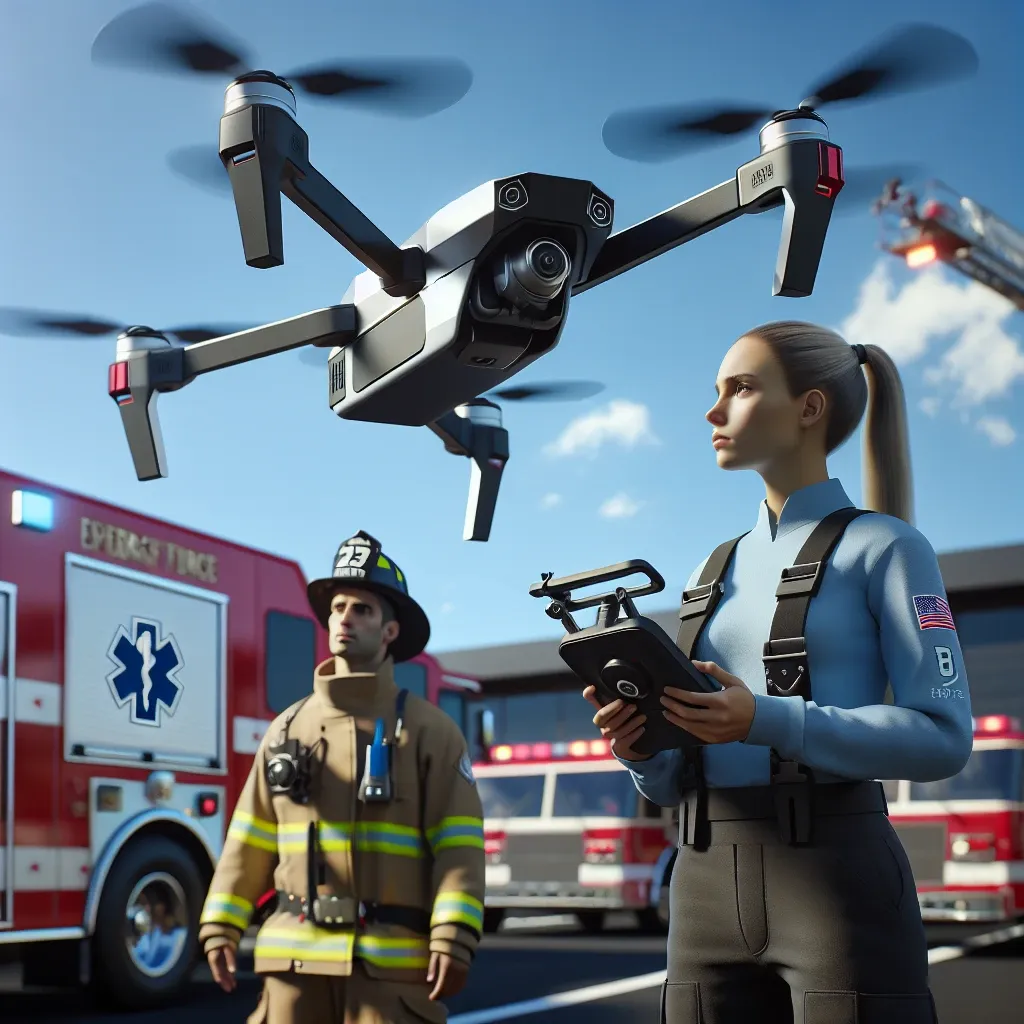
Introduction
In an era where technology plays a crucial role in emergency response, DJI has stepped up to the plate by introducing a rugged drone line tailored for U.S. emergency responders. This innovative range of drones aims to enhance situational awareness, improve response times, and ultimately save lives during critical incidents.
The Need for Rugged Drones
Emergency responders operate in some of the most challenging environments imaginable. Whether it’s a natural disaster, a search and rescue operation, or a fire, they require tools that can withstand harsh conditions. Traditional drones may falter under pressure, but DJI’s rugged models are engineered to excel.
Historical Context
Drone technology has evolved dramatically over the last decade, transitioning from recreational use to a pivotal role in public safety. The integration of drones into emergency response strategies has proven invaluable, allowing responders to gain aerial perspectives and access hard-to-reach areas. However, the need for durability and reliability has become apparent as operations often occur in adverse conditions.
DJI’s Rugged Drone Line
The new line of rugged drones from DJI showcases advanced technology specifically designed for emergency services. These drones feature enhanced durability, advanced imaging capabilities, and long flight times, making them indispensable tools for first responders.
Key Features
- Durability: Built to withstand extreme weather conditions, these drones can operate in rain, snow, and high winds.
- Advanced Imaging: Equipped with high-resolution cameras and infrared sensors, they provide real-time data and imagery.
- Extended Flight Time: With longer battery life, these drones can cover more ground in critical situations.
- User-Friendly Interface: Designed for quick deployment, the drones can be operated by personnel with minimal training.
Benefits of Using DJI’s Rugged Drones
Utilizing DJI’s rugged drones brings numerous advantages to emergency responders:
1. Enhanced Situational Awareness
These drones enable responders to capture real-time aerial footage, providing a comprehensive view of the situation on the ground. This information is crucial for making informed decisions during emergencies.
2. Faster Response Times
With the ability to deploy quickly and cover vast areas, drones can significantly reduce the time it takes to assess a situation. This speed can be the difference between life and death in critical incidents.
3. Safe Operations
Drones allow responders to gather intelligence without putting themselves in harm’s way. They can scout dangerous areas or assess damage from a safe distance.
4. Cost-Effectiveness
Investing in drone technology can lead to cost savings over time. By improving efficiency and reducing the need for manned missions in hazardous environments, agencies can allocate resources more effectively.
Real-World Applications
DJI’s rugged drones have already started making an impact in various emergency situations:
- Search and Rescue Missions: Drones can cover large areas quickly, helping responders locate missing persons in rugged terrains.
- Disaster Response: After natural disasters, drones can assess damage, survey infrastructure, and assist in logistics.
- Firefighting: Equipped with thermal imaging, drones can identify hotspots in wildfires, aiding firefighters in their operations.
Expert Insights
Many emergency services have begun to integrate drone technology into their operations, and experts believe that this trend will only grow. For instance, Chief Roberta Martinez from the City Fire Department remarked, “Drones have transformed the way we respond to emergencies. The insights we gain from aerial imagery are invaluable.”
Challenges and Limitations
While the benefits are substantial, there are challenges associated with deploying drones in emergency situations:
1. Regulatory Hurdles
The use of drones is subject to regulations that may limit where and how they can be flown. Emergency responders must navigate these rules to ensure compliance.
2. Technical Limitations
Despite their advanced technology, drones have limitations in terms of battery life and payload capacity, which can affect their effectiveness in prolonged operations.
3. Training Requirements
While user-friendly, operators still require training to maximize the potential of these drones. Agencies must invest in proper training programs.
Future Predictions
The future of drone technology in emergency response is promising. As advancements continue, we can expect:
- Increased Autonomy: Future drones may be able to operate autonomously, reducing the need for human intervention.
- Improved Integration: Enhanced systems for integrating drone data with existing emergency response frameworks.
- Broader Acceptance: As more agencies recognize the value of drones, their adoption will likely become widespread across all emergency services.
Conclusion
DJI’s release of rugged drones for U.S. emergency responders marks a significant step forward in public safety technology. As these drones become integrated into response strategies, they are set to enhance operational efficiency, improve safety, and ultimately save lives. With their advanced features and robust design, these drones will empower emergency responders to tackle challenges more effectively than ever before.
